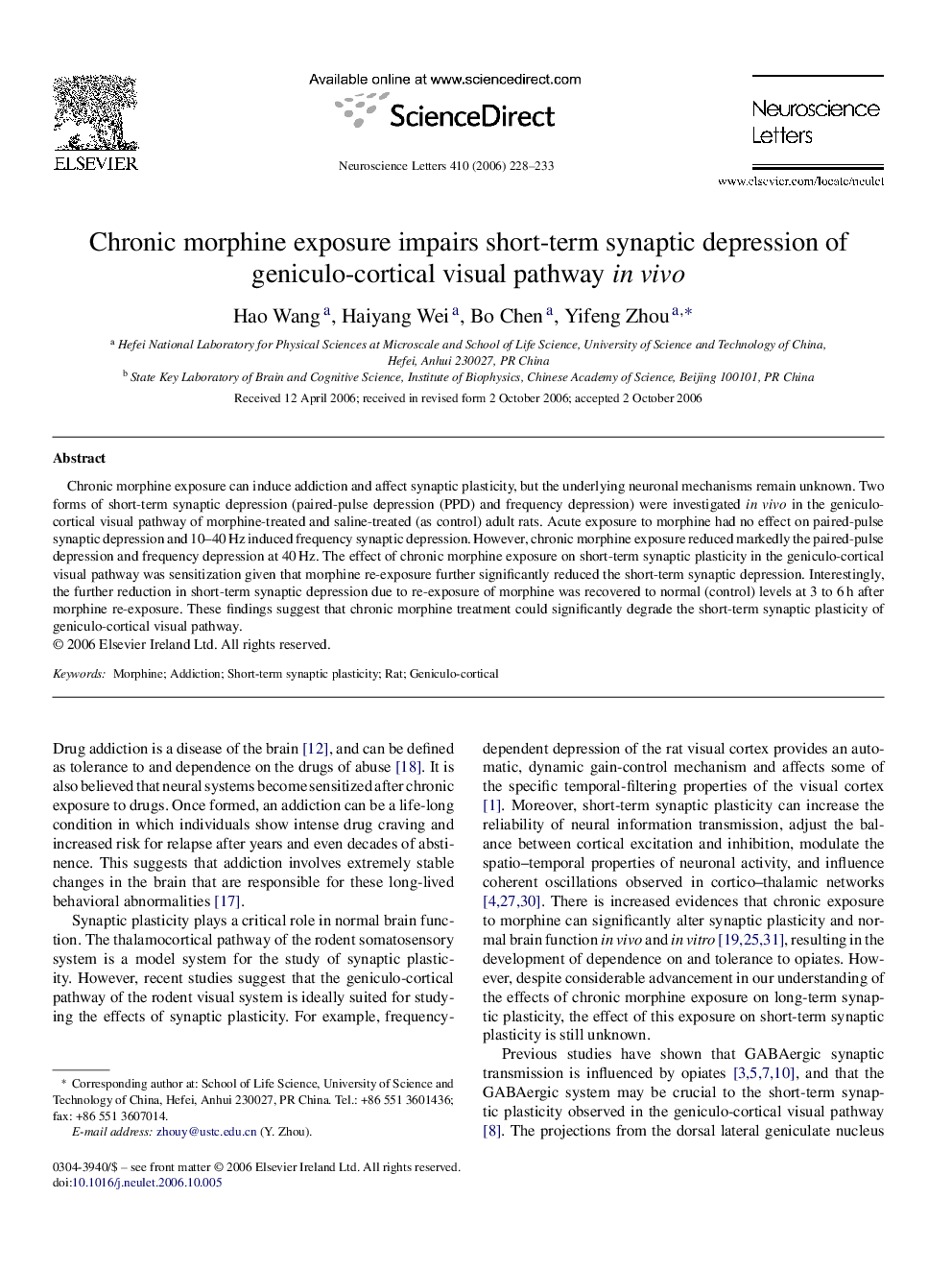| Article ID | Journal | Published Year | Pages | File Type |
|---|---|---|---|---|
| 4349783 | Neuroscience Letters | 2006 | 6 Pages |
Abstract
Chronic morphine exposure can induce addiction and affect synaptic plasticity, but the underlying neuronal mechanisms remain unknown. Two forms of short-term synaptic depression (paired-pulse depression (PPD) and frequency depression) were investigated in vivo in the geniculo-cortical visual pathway of morphine-treated and saline-treated (as control) adult rats. Acute exposure to morphine had no effect on paired-pulse synaptic depression and 10-40Â Hz induced frequency synaptic depression. However, chronic morphine exposure reduced markedly the paired-pulse depression and frequency depression at 40Â Hz. The effect of chronic morphine exposure on short-term synaptic plasticity in the geniculo-cortical visual pathway was sensitization given that morphine re-exposure further significantly reduced the short-term synaptic depression. Interestingly, the further reduction in short-term synaptic depression due to re-exposure of morphine was recovered to normal (control) levels at 3 to 6Â h after morphine re-exposure. These findings suggest that chronic morphine treatment could significantly degrade the short-term synaptic plasticity of geniculo-cortical visual pathway.
Related Topics
Life Sciences
Neuroscience
Neuroscience (General)
Authors
Hao Wang, Haiyang Wei, Bo Chen, Yifeng Zhou,
